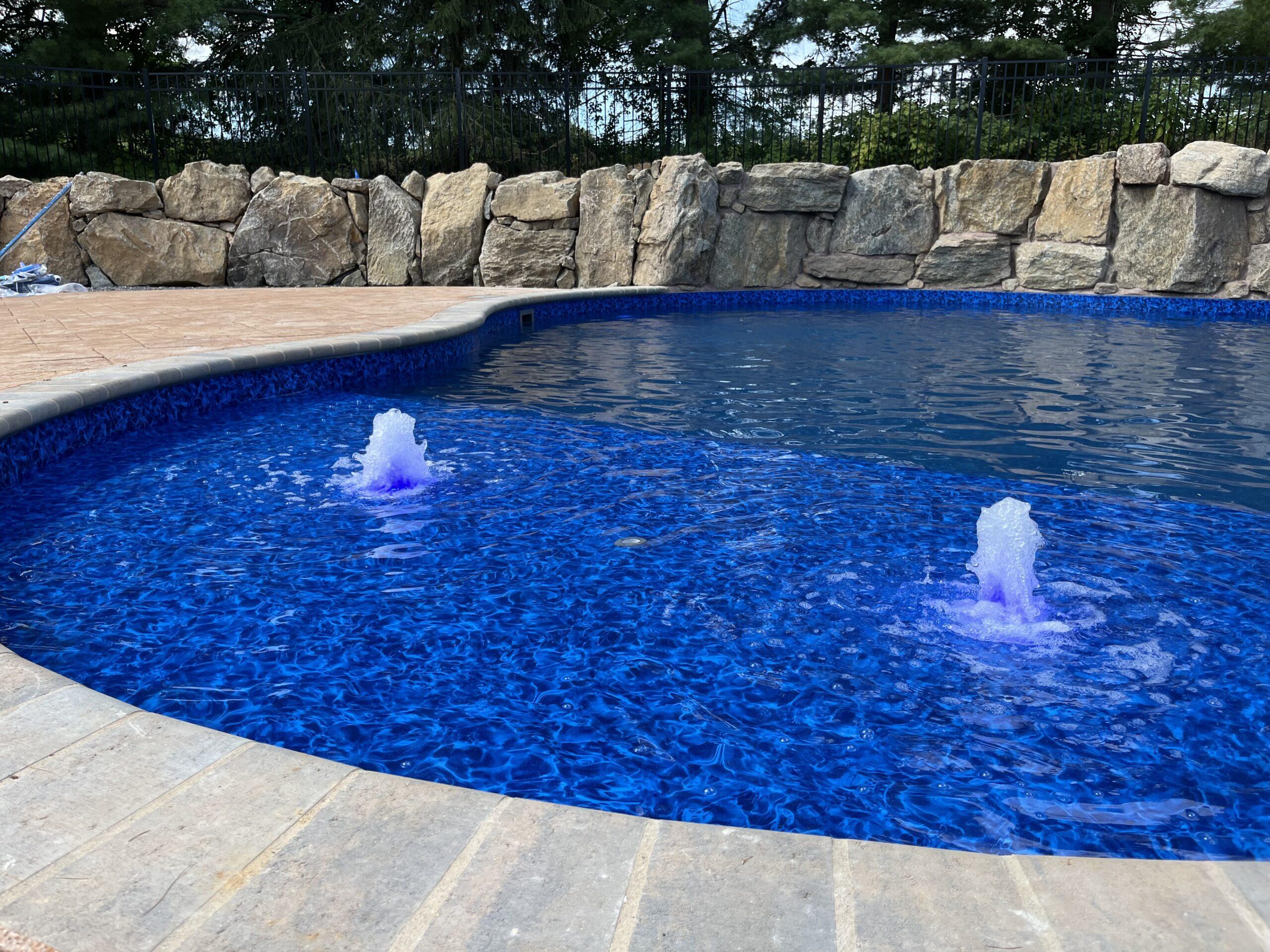A sparkling, smooth pool surface sure looks and feels nice, but those characteristics aren’t everything. As pool experts, we don’t make pools this “clean” just because it’s pleasing to the eye. No, we make it for function. When that smoothness isn’t there, plenty of problems likely are. If there’s visible damage, rough textures, discoloration, and frequent leaks on the surface, a pool resurfacing is likely needed.
In this blog, we’re going to go over the things you should be on the lookout for that indicate something is amiss. Let’s determine if you’re in need of a swimming pool resurfacing.
Visible Surface Damage
Cracks, chips, and peeling plaster are all telltale signs of a pool surface that has seen better days. This deterioration isn’t going to be reversed without intervention. And it’s not just the large areas of damage you should be concerned about. Sometimes what looks like a small blemish could be a bigger problem than you realize, so be hypervigilant in spotting any and all signs, which could include:
- Hairline cracks that could easily spread
- Peeling or flaking plaster
- Rough or pitted areas of the finish
- Chipped—or entirely missing—tiles
Rarely does concerning damage start big. It could begin as an unassuming flaw that grows and grows until it’s a big problem that requires more than just a pool resurfacing.
Rough or Uneven Texture
Remember when we were talking about smooth surfaces? That smoothness isn’t just for show. In fact, if your pool is particularly bumpy, rough, or gritty, it could post a safety risk like scraping or skin irritation. In addition to being a scratch risk, these same rough surfaces provide a great opportunity for algae and bacteria to take hold, making your pool tougher to clean and much less enjoyable to swim in. Be on the lookout for these signs that you may need a pool resurfacing:
- Scratches and cuts—likely on your feet or hands
- Algae buildup
- Difficult pool cleanings
- Rapid wear and tear on pool cleaning tools
Stains and Discoloration
Unless you’re sprucing up wood furniture, staining is probably something you don’t want to see—and your pool is no different. When you envision a backyard pool, your mind will likely picture a clean, white surface dancing under clean rippling water. When there’s discoloration in that surface, it’s easy to notice.
These stains can be the result of algae, minerals, or chemical reactions. But don’t jump into a pool resurfacing without doing your due diligence! Some staining and discoloration is purely cosmetic and can be remedied with a good cleaning. However, if you discover the issue goes deeper than that, it’s time to take the proper steps to fix it.
Frequent Pool leaks
If you notice the water level in your pool is suspiciously lowering, you’ve got a major red flag on your hands. Cracks and worn out finishes are big contributors to escaping water, which can lead to sky-high utility bills and constant refills.
Here are the signs you may be dealing with a leak:
- Significant drop in water level over a few days—more than just water splashing out of the pool
- Higher-than-expected water bills
- The need for frequent pool refills
- Soggy or damp spots around your pool’s deck
If you suspect a leak is to blame, it’s best to act as soon as possible. A pool resurfacing cost is nothing compared to the bills associated with larger-scale repairs.
Difficulty Maintaining Water Chemistry
There might be nothing more important to your pool water than pH level. When pH levels aren’t kept within optimal levels, it can cause skin rashes and swimmers’ eyes. While some less-than-ideal pH levels could be attributed to recent rainfall or the number of swimmers in the water, it could also be the result of—you guessed it—poor pool surfacing. A pool resurfacing can stabilize those levels to an acceptable range, which helps improve water clarity and lowers maintenance cost overall.
Swimming Pool Resurfacing From the Experts
Your pool is the height of your outdoor living aspirations, but it’s also an investment—and as with any investment, it’s important to give it proper care. Regular inspections and maintenance will go a long way towards helping you identify any issues, including concerning damage or wear of its surface. If you’ve noticed any of the issues we’ve discussed here, it’s time to call in the professionals. At Aquatic Solutions, you’ll find great customer service and a fair pool resurfacing cost. Get in touch with us, and we’ll make all the proper adjustments so you can dive back in soon!

